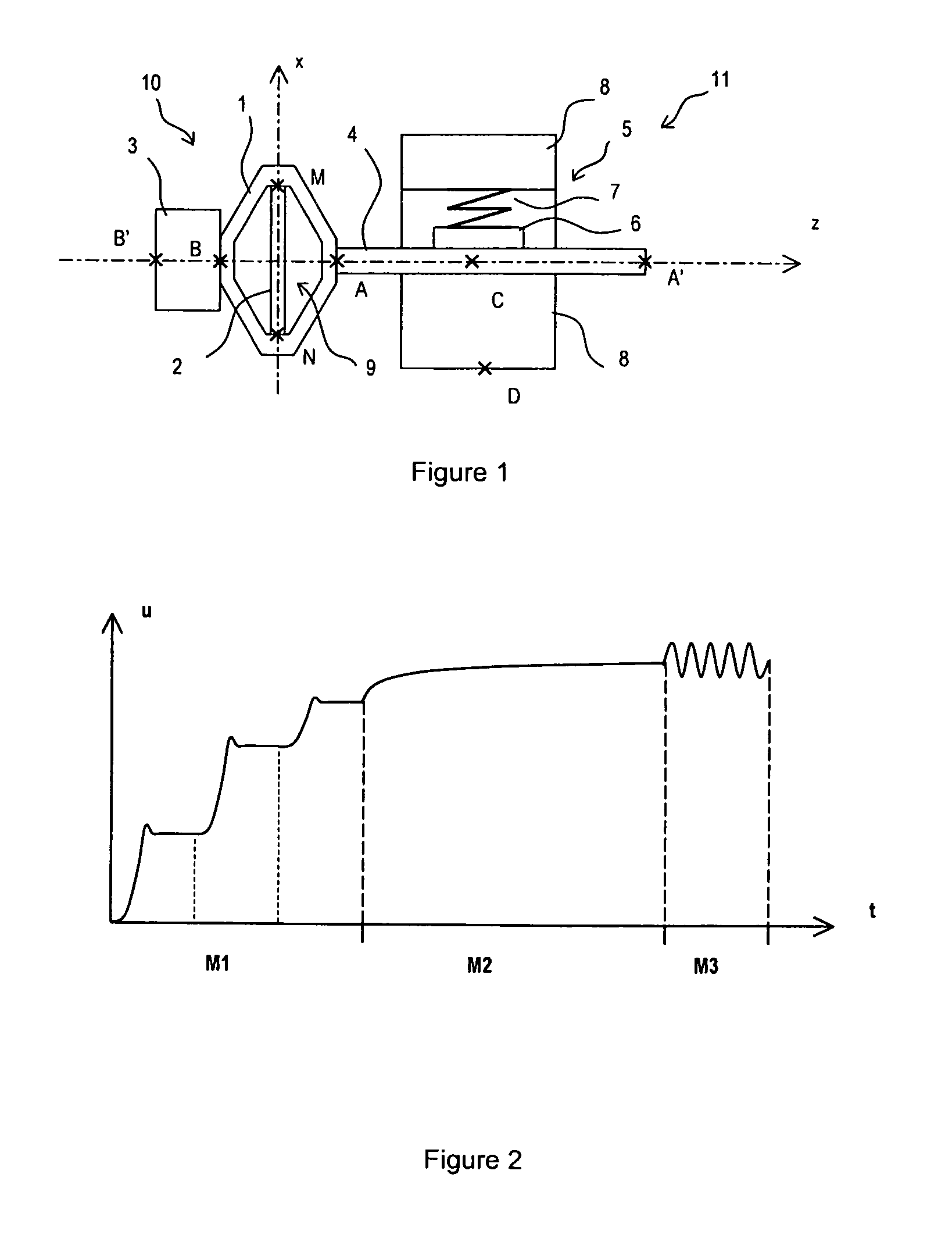Fine positioning system using an inertial motor based on a mechanical amplifier
a technology of mechanical amplifier and positioning system, applied in piezoelectric/electrostrictive/magnetostrictive devices, electrical apparatus, piezoelectric/electrostrictive/magnetostrictive devices, etc., can solve problems such as system malfunction, loss of coherence, and solder and electrode temperature rise of piezoelectric elements, so as to improve the performance and dependability of piezoactive inertial motors
- Summary
- Abstract
- Description
- Claims
- Application Information
AI Technical Summary
Benefits of technology
Problems solved by technology
Method used
Image
Examples
Embodiment Construction
[0043]With reference to FIG. 1, the inertial motor comprises a first inertial sub-assembly 10 formed by a mechanical amplifier 1, a piezoactive element 2 and a countermass 3, and a second relative drive sub-assembly 11 comprising in particular a clamp 5 and a clamped member in the form of a shaft 4 oriented along the z-axis. Clamp 5 is formed by a pad 6 in sliding contact with shaft 4 towards point C and by a flexible preloading system 7 secured to the frame 8. System 7 is designed to produce a static force F perpendicular to the z-axis. If point D is fixed, the load to be driven in relative movement can be fixed either towards point A or in its extension A′ onto shaft 4 or towards point B or onto countermass towards B′. If point B is fixed, the load to be driven can be fixed towards point D.
[0044]Clamp 5 and clamped member 4 can be replaced by any other type of drive member and driven member.
[0045]Mechanical amplifier 1 presents an actuating point A and an inertia point B. Mechanic...
PUM
 Login to View More
Login to View More Abstract
Description
Claims
Application Information
 Login to View More
Login to View More - R&D
- Intellectual Property
- Life Sciences
- Materials
- Tech Scout
- Unparalleled Data Quality
- Higher Quality Content
- 60% Fewer Hallucinations
Browse by: Latest US Patents, China's latest patents, Technical Efficacy Thesaurus, Application Domain, Technology Topic, Popular Technical Reports.
© 2025 PatSnap. All rights reserved.Legal|Privacy policy|Modern Slavery Act Transparency Statement|Sitemap|About US| Contact US: help@patsnap.com



